Abstract
We studied temperature stability in 22 infants of birthweight less than 1500 g in the first four days of life. Infants were nursed in incubators using either air mode control or skin temperature servo control. Data were collected continuously using a computer linked monitoring system. Skin temperature control resulted in a less stable thermal environment than air mode control. Increased thermal stability in the incubator on air mode control may well be beneficial, particularly to sick, very low birthweight infants.
Full text
PDF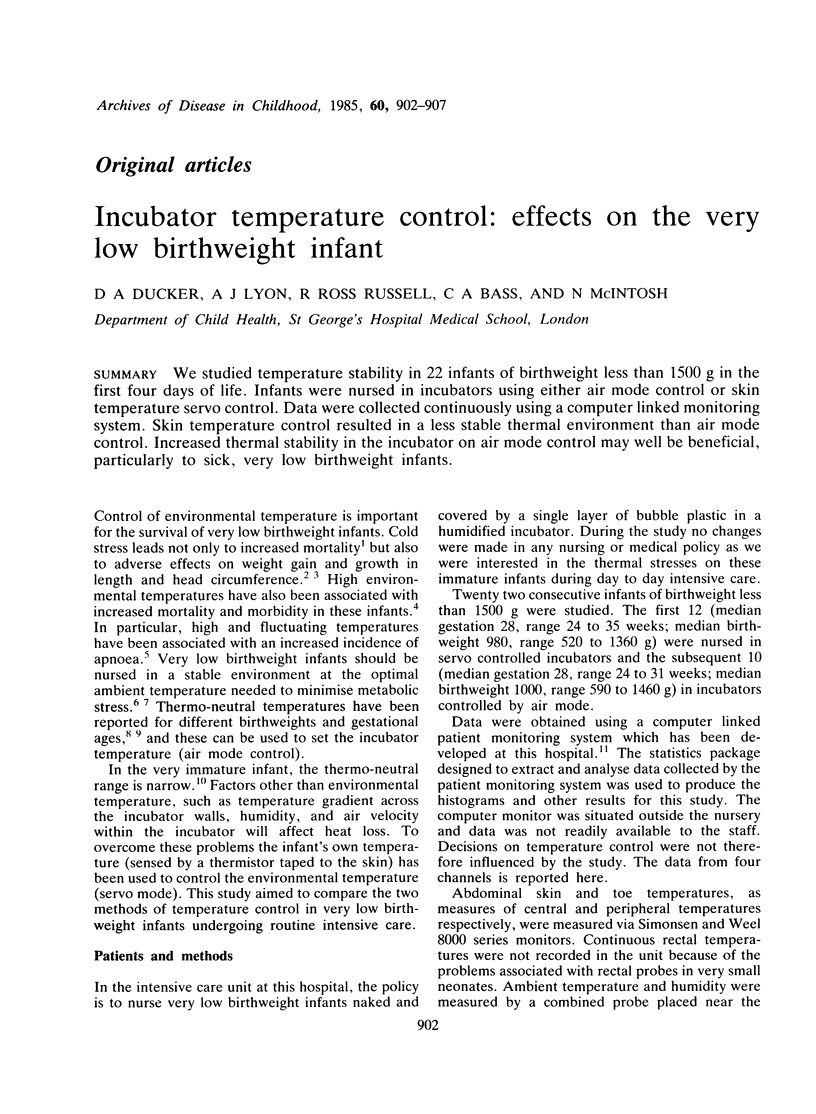
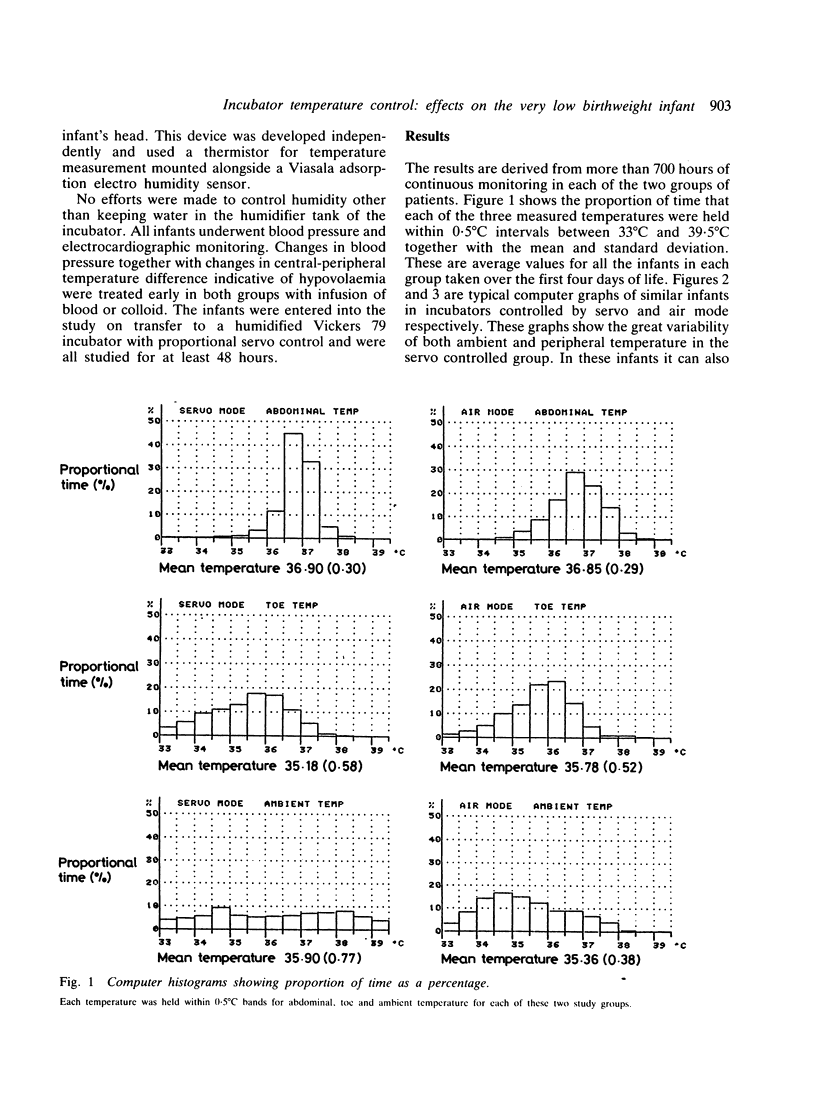
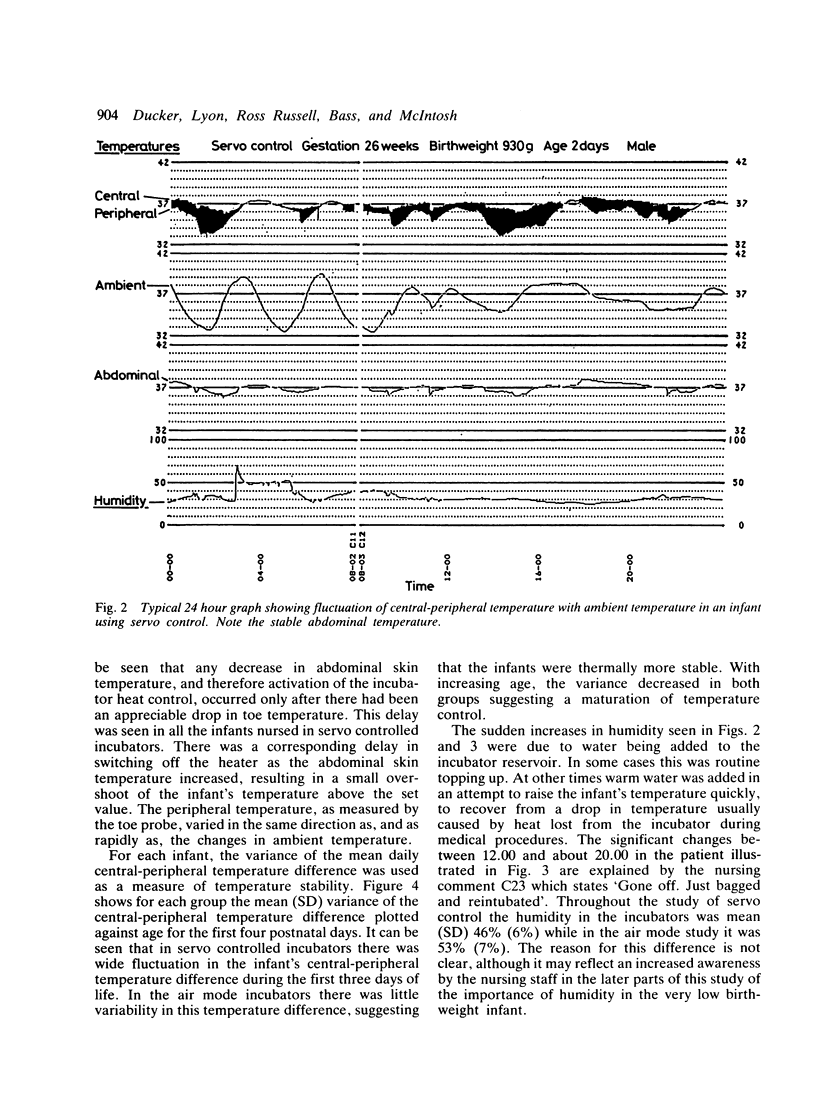
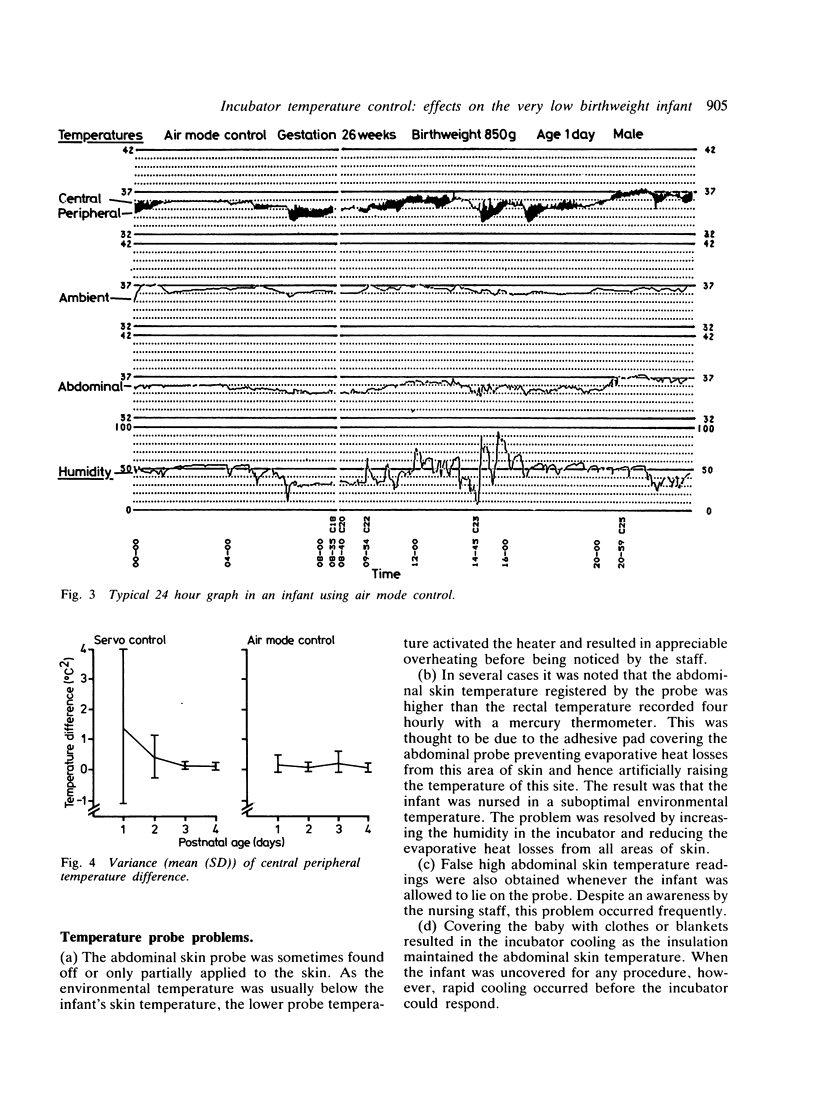
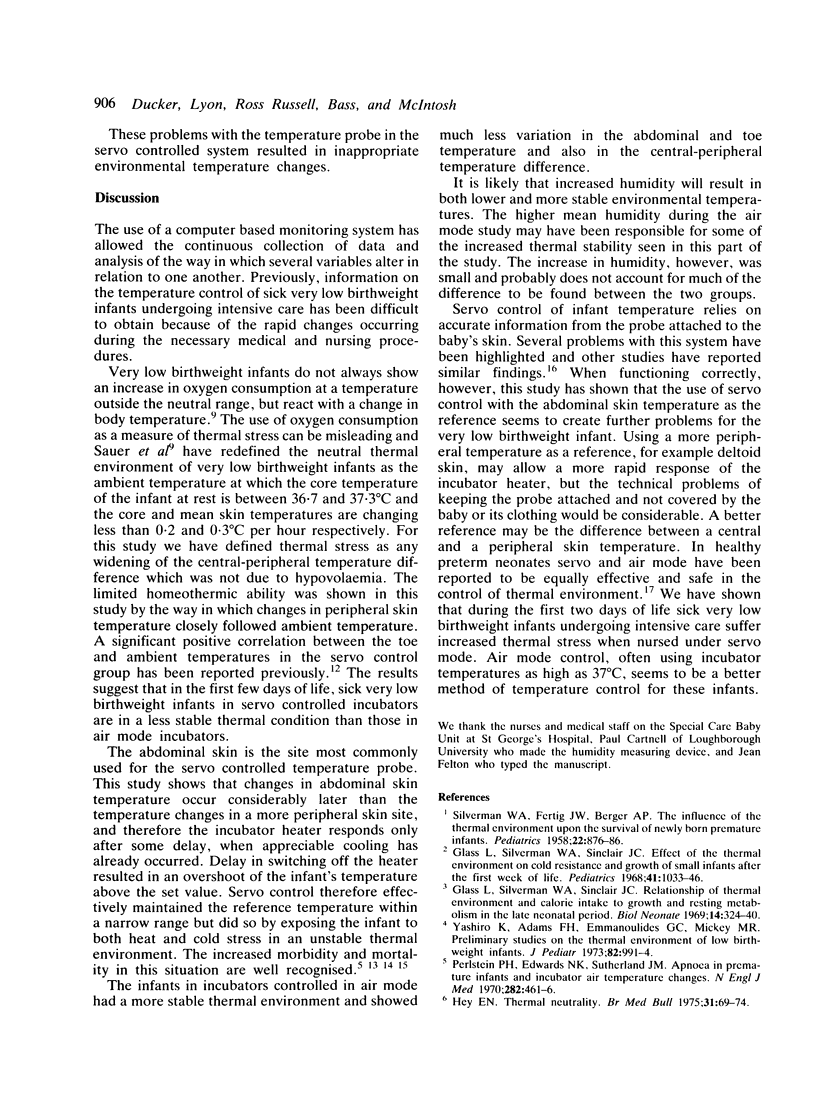
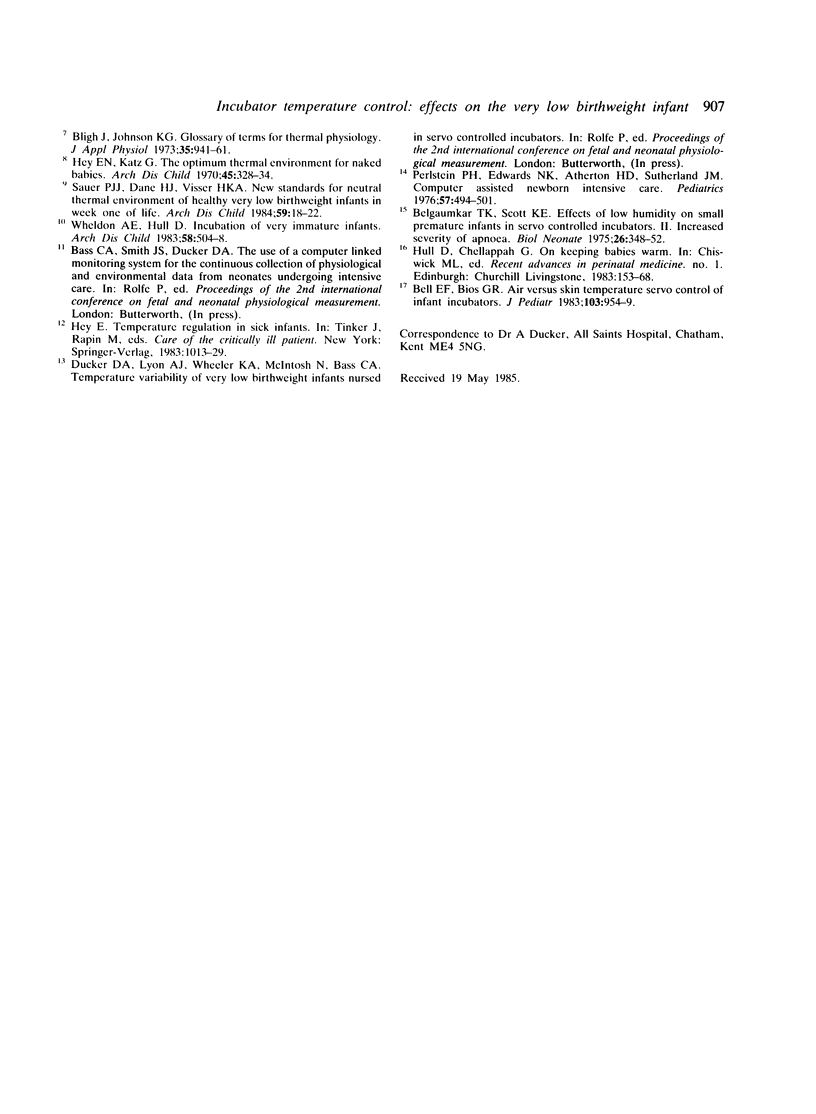
Selected References
These references are in PubMed. This may not be the complete list of references from this article.
- Belgaumkar T. K., Scott K. E. Effects of low humidity on small premature infants in servocontrol incubators. II. Increased severity of apnea. Biol Neonate. 1975;26(5-6):348–352. doi: 10.1159/000240748. [DOI] [PubMed] [Google Scholar]
- Bell E. F., Rios G. R. Air versus skin temperature servocontrol of infant incubators. J Pediatr. 1983 Dec;103(6):954–959. doi: 10.1016/s0022-3476(83)80729-x. [DOI] [PubMed] [Google Scholar]
- Bligh J., Johnson K. G. Glossary of terms for thermal physiology. J Appl Physiol. 1973 Dec;35(6):941–961. doi: 10.1152/jappl.1973.35.6.941. [DOI] [PubMed] [Google Scholar]
- Glass L., Silverman W. A., Sinclair J. C. Effect of the thermal environment on cold resistance and growth of small infants after the first week of life. Pediatrics. 1968 Jun;41(6):1033–1046. [PubMed] [Google Scholar]
- Glass L., Silverman W. A., Sinclair J. C. Relationship of thermal environment and caloric intake to growth and resting metabolism in the late neonatal period. Biol Neonat. 1969;14(5):324–340. doi: 10.1159/000240198. [DOI] [PubMed] [Google Scholar]
- Hey E. N., Katz G. The optimum thermal environment for naked babies. Arch Dis Child. 1970 Jun;45(241):328–334. doi: 10.1136/adc.45.241.328. [DOI] [PMC free article] [PubMed] [Google Scholar]
- Hey E. Thermal neutrality. Br Med Bull. 1975 Jan;31(1):69–74. doi: 10.1093/oxfordjournals.bmb.a071244. [DOI] [PubMed] [Google Scholar]
- Perlstein P. H., Edwards N. K., Atherton H. D., Sutherland J. M. Computer-assisted newborn intensive care. Pediatrics. 1976 Apr;57(4):494–501. [PubMed] [Google Scholar]
- Perlstein P. H., Edwards N. K., Sutherland J. M. Apnea in premature infants and incubator-air-temperature changes. N Engl J Med. 1970 Feb 26;282(9):461–466. doi: 10.1056/NEJM197002262820901. [DOI] [PubMed] [Google Scholar]
- SILVERMAN W. A., FERTIG J. W., BERGER A. P. The influence of the thermal environment upon the survival of newly born premature infants. Pediatrics. 1958 Nov;22(5):876–886. [PubMed] [Google Scholar]
- Sauer P. J., Dane H. J., Visser H. K. New standards for neutral thermal environment of healthy very low birthweight infants in week one of life. Arch Dis Child. 1984 Jan;59(1):18–22. doi: 10.1136/adc.59.1.18. [DOI] [PMC free article] [PubMed] [Google Scholar]
- Wheldon A. E., Hull D. Incubation of very immature infants. Arch Dis Child. 1983 Jul;58(7):504–508. doi: 10.1136/adc.58.7.504. [DOI] [PMC free article] [PubMed] [Google Scholar]
- Yashiro K., Adams F. H., Emmanouilides G. C., Mickey M. R. Preliminary studies on the thermal environment of low-birth-weight infants. J Pediatr. 1973 Jun;82(6):991–994. doi: 10.1016/s0022-3476(73)80431-7. [DOI] [PubMed] [Google Scholar]


